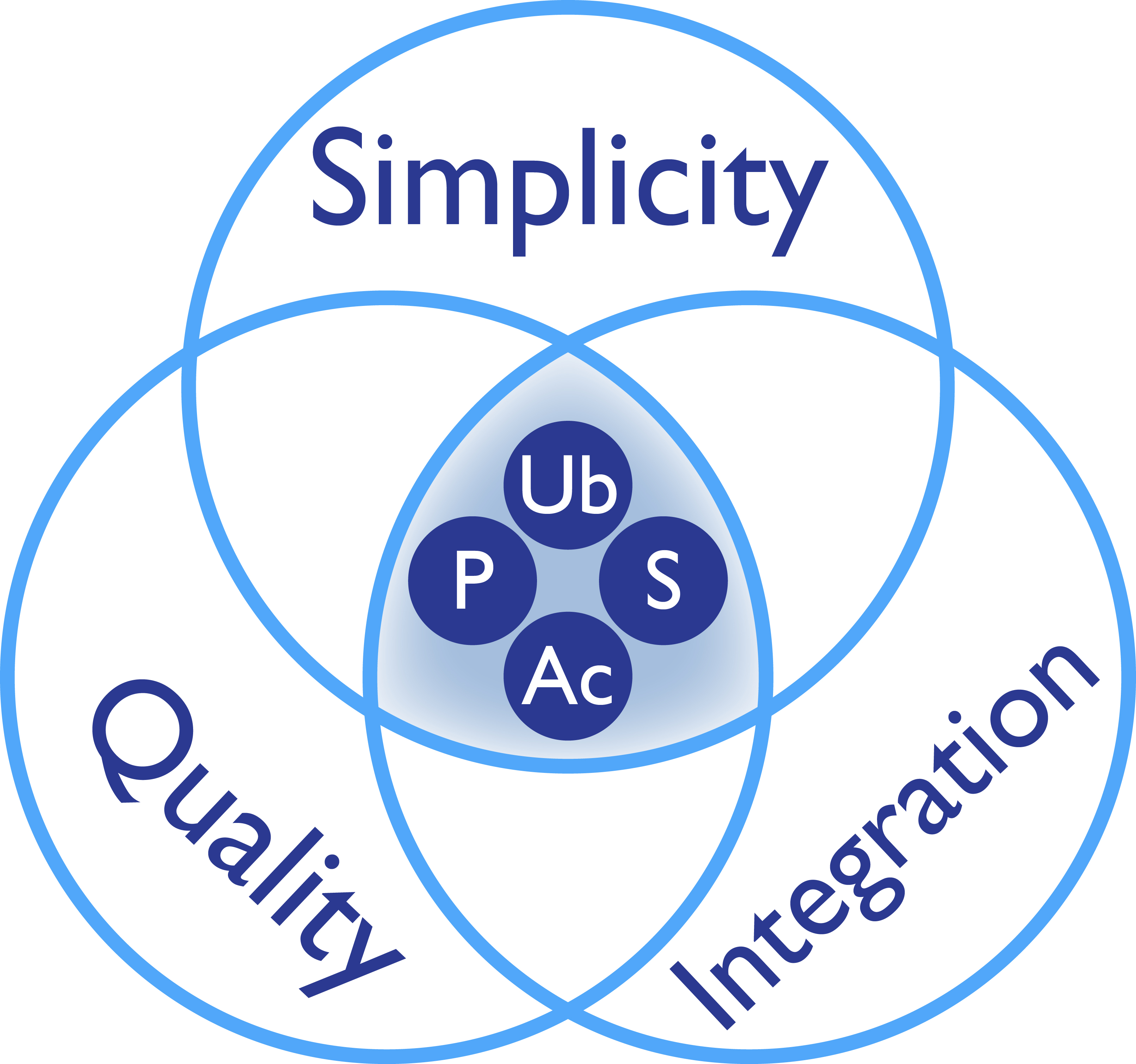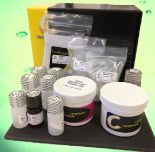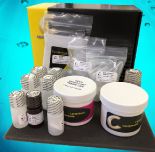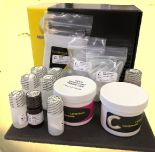Signal-Seeker™ SUMOylation 2/3 Detection Kit (30 assay)
The Signal-Seeker™ line of produts have been developed to allow simple analysis of key regulatory protein modifications by specialists and non-specialists alike. The comprehensive Signal-Seeker™ kits provide an affinity bead system to isolate and enrich modified proteins from any given cell or tissue lysate. The enriched protein population is then analyzed by standard western blot procedures using a primary antibody to the target protein.
Product Uses Include
- Investigate transient regulatory mechanisms
- Measure signalling events of multiple pathway member proteins
- Discover new modifications of your protein of interest
- Gain insight into regulatory mechanisms
- Measure endogenous or transiently expressed protein signalling events
Validation Data: SUMOylation 2/3 Detection Kit White Paper
Kit contents
The SUMOylation 2/3 kit contains the following components:
| Lysis and protein quantitation step | IP and pre-clear step | Wash step | Elution step | Western step |
BlastR™ Lysis Buffer BlastR™ Dilution Buffer BlastR™ Filters Protease Inhibitor Cocktail De-SUMOylation inhibitor Cocktail Precision Red™ Protein Assay Reagent | SUMOylation 2/3 Affinity Beads IP Control Beads
| BlastR™ Wash Buffer
| Spin Columns Bead Elution Buffer
| Chemiluminescent Reagent A Chemiluminescent Reagent B Anti-SUMO2/3-HRP antibody
|
Example results
There are many applications for these kits, here we describe an interesting example:
Application 1: Investigate significant SUMOylation 2/3 events
Immunoprecipitation using the Signal-Seeker™ SUMOylation 2/3 Detection Kit
Denatured cell lysates were prepared as previously reported1 from HeLa cells ("HS43": Heat Shock treated 42°C for 10 min, and "CT37": untreated) and HeLa siRNA SUMO knockdown ("KDS2"). 1mg of lysate was used for the immunoprecipitation (IP) of SUMOylated 2/3 proteins. Western blots of immunoprecipitated proteins were developed using anti-SUMO-2/3 antibody (Cytoskeleton cat# ASM23) (A) or anti-Ubc9 antibody (B). The level of SUMO-2/3 conjugates in heat shock treated cells is higher than control, and shRNA SUMO-2 knock-down reduced the level of SUMOylated 2/3 modified proteins. Chemical conjugation of SUMO-2/3 antibody (11G2) to the affinity bead matrix prevents heavy and light chain leaching. Unconjugated free SUMO is also captured by the SUMO-2/3 affinity beads.
(B) Unmodified Ubc9 is visible near 18kDa. High molecular-weight band indicates that Ubc9 is SUMOylated by a single SUMO-2/3 protein. Ubc9 has previously been reported to be a target for SUMOylation1,2.
1. Barysch S. et al. 2014. Identification and analysis of endogenous SUMO1 and SUMO2/3 targets in mammalian cells and tissues using monoclonal antibodies. Nat Protoc. 9(4):896-909
2. Becker J. et al. 2013. Detecting endogenous SUMO targets in mammalian cells and tissues. Nature Struc. & Mol. Biol. 20, 525-531.
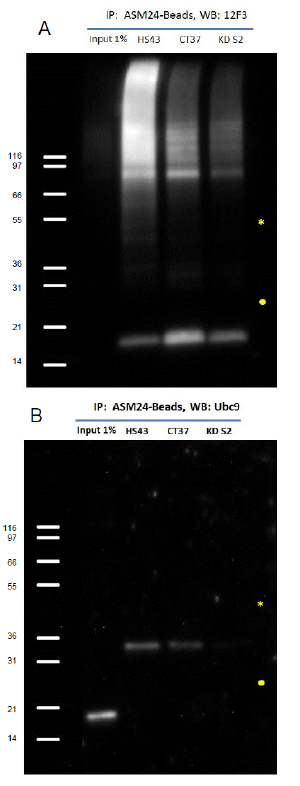
• Pharmacological investigation of SUMOylating and de-SUMOylating enzymes involved in regulation of target proteins.
• Investigate SUMOylation under a variety of different growth factors or drug treatments.
• Examine the interaction of SUMOylated target proteins with its downstream effectors.
• Examine crosstalk between SUMOylation 2/3 and other PTMs for target proteins.
For more information contact: signalseeker@cytoskeleton.com
Associated Products:
Signal-Seeker™ Phosphotyrosine Detection Kit (Cat. # BK160)
Signal-Seeker™ Ubiquitination Detection Kit (Cat. # BK161)
Signal-Seeker™: BlastR™ Rapid Lysate Prep Kit (Cat. # BLR01)
Signal-Seeker™ SUMOylation 2/3 Affinity Beads (Cat.# ASM24-beads)
Signal-Seeker™: PTMtrue™ SUMOylation 2/3 Antibody (Cat.# ASM23)
Visit our Signal-Seeker™ Tech Tips and FAQs page for technical tips and frequently asked questions regarding this and other Signal-Seeker™ products click here
If you have any questions concerning this product, please contact our Technical Service department at tservice@cytoskeleton.com

